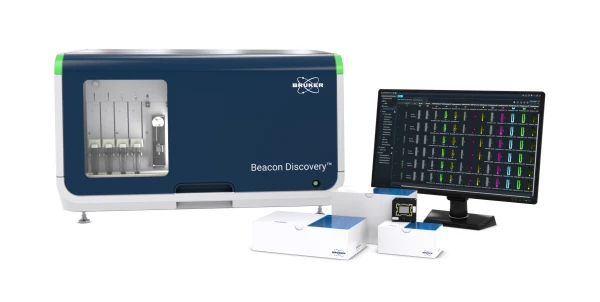Rotary Evaporator Safety
Rotovap safety
A rotary evaporator is essential to distill, dry, recover, or extract samples in many labs. However, any time solvents are being used, especially under pressure and with heat, significant safety concerns arise. Below, find some common safety concerns when using a rotovap. For any rotary evaporator, refer to the manufacturer’s instructions for any details about your specific apparatus.
How to locate the best place for your rotary evaporator
-
Surrounding environment: There are many conditions you need to consider for the correct location of your evaporator:
- Non-explosive, non-corrosive environment. Don’t use in an explosive or corrosive environment, it is not explosion proof.
- Use in a fume hood. This allows vapors to be removed safely without releasing them into your lab.
- Some manufacturers offer a protective cover for use outside the fumehood, but only use under recommended conditions, for example heating medium temperatures lower than 90°C
- Ventilate. The evaporator will need to be ventilated after use, before disassembly. Ensure the ventilation can be done safely and any vapors will be handled appropriately for safety and environmental concerns.
- Dry, dust-free location. Make sure your evaporator is clear of any splash zones.
- Flat, Vibration and impact-free location. Vibration can cause hot liquids to splash and your sample to become contaminated or lost into the collection apparatus. Impact can damage the rotary evaporator and cause malfunctions in case of emergency shut-down.
- Clearance. In an emergency your evaporator will shut down and lift the evaporation flask out of the heating medium. Ensure that the lifting mechanism is free to move unobstructed at all times.
-
Moving. Read your manufacturer’s instructions so you understand how to safely hold your evaporator while you move it to the fume hood. Be aware of any locking mechanisms to secure the movable parts of your evaporator before moving it.
-
In case of breakage. Consider the area around your evaporator in case the flasks or condenser break. Many solvents and samples are hazardous if uncontained. Know where the solvent would be released to and what will happen to your sample in case of breakage. Also think about the splash zone if the evaporator flask breaks and releases fluid into the heating medium (see heating medium below).
Rotary evaporator assembly safety considerations
-
Correct accessories. Always use the correct tubing and accessores for your evaporator. Don’t make-do or retrofit your device. Follow manufacturer’s instructions.
-
Inspect equipment. Check your flasks before every use and handle them carefully. Damaged glass can break easily under heat and pressure. Consider using plastic-coated glass flasks.
-
Let evaporator adjust to ambient temperature.
-
Flask angle. Ensure the flask will not hit the walls or floor of the heating bath when it is lowered into the heating medium.
-
Keep powered off during assembly. Make sure the power switch is off during assembly to avoid inadvertent activation of the control panel.
-
Always use a condenser. Don’t operate without a condenser! Doing so will allow solvent vapor to escape and poses a significant poisoning risk
Heating medium
-
Liquid compatibility. Consider the compatibility of the heating medium with the sample and solvent. Glycol-based heating medium is more compatible with water-based samples, and could help prevent explosive expulsion in case of contact between the two fluids.
-
Ignition temperature. Know what the heating fluid’s ignition temperature is and never set the temperature higher.
-
Boiling point. Keep the heating medium below its boiling temperature. Don’t let the fluid run dry.
-
Keep full. If the heat bath runs dry, the actual temperature of the heating coil will dramatically increase above the set temperature
-
Don’t overfill. When filling the heating medium, ensure the level is appropriate for the evaporation flask being lowered into it, so it doesn’t overflow when the flask is lowered into it.
Solvents and samples
-
Sample volume. Don’t overload the sample flask. Be aware of the weight limit of the lift drive and don’t overload the sample flask.
-
Compatibility of solvents. Rotary evaporators are used to remove solvents. You must confirm if the solvents you are removing are compatible with the tubing and seals on the rotovap attachments you have.
-
Distillate and residual solvent vapor. This vapor may be poisonous, be aware of the reactivity of both the distillate and residual solvent vapor and ensure there is no exposure risk.
-
Heating bath fluid oil flash point. Be aware of the flash point of the heating bath fluid oil and the temperature of the heating bath.
Operation
-
Chilling condenser. Always monitor the chilling condenser. Failure of the condenser could result in dangerous operating conditions, such as explosion or vapor release.
-
Multiple rotovaps. If you operate multiple rotovaps using remote controls, make sure you are adjusting the correct one to avoid ruining your experiments or a dangerous situation. Color-coded stickers can provide a quick visual reference
-
Programs. Consider upgrading to a programmable rotary evaporator. Programs help prevent mistakes when running a routine process
-
Rotation of evaporation flask. Monitor the evaporation flask rotation to prevent uneven heat or drying of sample on one side.
-
Operate under supervision. Don’t operate unattended unless using a device from the manufacturer that monitors the evaporator for you. And only then understand the limitations of the automated monitoring.
-
Empty collection flask. Always empty the collection flask as needed to prevent overflow.
-
Stay clear. If a program is being used that changes rotation speeds, temperatures, and lift position, stand clear of the apparatus to avoid injury when automated changes are occurring (splashes, crushing).
-
Ensure flask can move as programmed. If a program is being used that changes rotation speeds, temperatures, and lift position, make sure the flask can move freely under these parameters.
Disassembly
-
Cooling. Allow heat bath and evaporation flask to cool before removal. Allow the evaporator flask to cool before removing it.
-
Ventilate. ALWAYS ventilate the evaporator before disassembly. Be aware of how the vapor will be released. The vapor could be poisonous, reactive, or environmentally damaging. Use a fume hood with appropriate filtration to operate your rotary evaporator.
-
Empty heat bath. Empty the heat bath if possible before disassembly; don’t transport the unit with fluid in the heating bath
-
Cleaning. Don’t use abrasive cleaning materials, bleach, solvents, or ammonia as they can all damage the flasks and evaporator. Consult your manufacturer for approved cleaning instructions.
Personal safety when operating a rotary evaporator
-
PPE. Always wear appropriate personal protective equipment in case of breakage or splashing.
-
Dry ice risks. If using a cold trap with dry ice, be aware of the risks working with dry ice: extreme cold can cause local freezing, CO2 vapor can accumulate in low-lying areas. Exposure to CO2 vapor can cause irritation to eyes and if in high enough concentrations, it can displace oxygen pose a serious inhalation risk.
-
Sound. If using the rotary evaporator with an optional vacuum pump, these pumps can create a significant amount of noise. Consider the location of the pump and exposure times. Vacuum pump manufacturers also offer speed control options that can reduce noise emission and also extend the life of the pump.
-
Ergonomics. Large flasks are heavy and awkward. Consider options that help move, lift, and lower flasks.
-
Burn risks. Be alert to the many ways you can be burned during the use of a rotary evaporator, from the heating bath and medium, to the hot solvent vapor.
-
Training. Always look for appropriate training on the use of your rotary evaporator. Contact the manufacturer if you have any questions.
-
Don’t heat food in the heating bath. This seems funny, but at least one manufacturer has this as a warning in their instructions, so may be more of a problem than it seems at first.
In case of emergency
-
Power loss. Understand how your equipment behaves in case of an emergency. Most equipment will have a fail-safe mechanism. In the case of a rotary evaporator, this may mean that the evaporation flask will automatically be lifted out of the heating medium. Ensure there is adequate room above the lift drive for it to move and don’t block the drive in any way.
-
Warnings and alerts. Familiarize yourself with the safety warning the device can produce so you aren’t scrambling when an alarm goes off reading the manual.
-
Coolant failure. In the event of a coolant failure, make sure the solvent vapor cannot enter the ambient air










